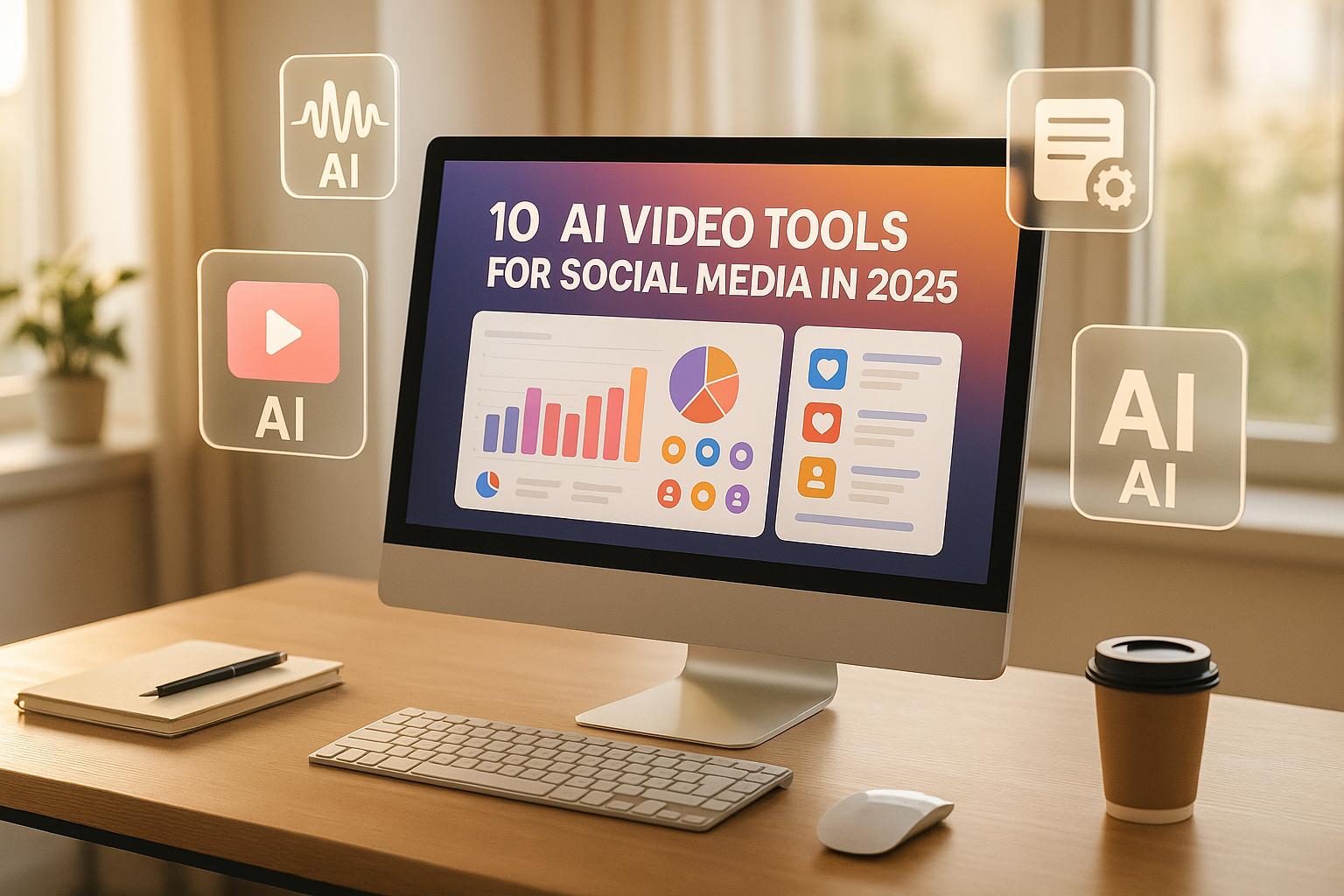AI adoption across departments can transform how businesses operate, improving efficiency, decision-making, and teamwork. By sharing AI tools and data, organizations can break down silos, cut costs, and speed up processes. However, challenges like technical integration issues and employee resistance must be addressed for success.
Key Takeaways:
-
Benefits of Cross-Department AI:
- Automates repetitive tasks.
- Improves data sharing and decision-making.
- Reduces costs with shared resources.
- Enhances collaboration and customer insights.
-
Challenges:
- Legacy systems and isolated data.
- Security conflicts and varying needs.
- Resistance to change and job security fears.
-
Success Strategies:
- Start with small pilot programs.
- Provide tailored training and clear communication.
- Use metrics like ROI and productivity to track results.
Organizations like Spotify and healthcare providers have shown how thoughtful implementation, training, and performance tracking can lead to measurable improvements. Start small, focus on collaboration, and choose tools that fit your systems to make AI work across your teams.
Reasons and Obstacles for Multi-Department AI
Why Companies Choose AI
Businesses implement AI across departments to improve efficiency, enhance decision-making, and reduce costs. Some key reasons for adopting AI on an enterprise level include:
- Automating repetitive tasks, allowing employees to focus on strategic work
- Using cross-department data analysis to make quicker, well-informed decisions
- Streamlining resource allocation through centralized AI platforms
- Encouraging innovation by sharing tools across teams
While the advantages are clear, integrating AI across an entire organization is not without its challenges.
Common Implementation Barriers
Adopting AI across multiple departments often brings both technical and cultural hurdles that need careful planning to address.
Technical Integration Challenges
- Older systems may not work well with modern AI, disrupting data flow
- Isolated departmental data systems make it harder for AI to function effectively
- Security protocols may conflict between different systems
- Varying technical needs across departments complicate integration efforts
Organizational Resistance
- Leaders may worry about losing control over their department’s processes
- Employees might fear AI will replace their jobs
- Resistance to change can slow progress
- The time needed to learn new systems can hinder adoption
Companies that succeed in overcoming these challenges often rely on cross-functional teams, tailored training programs for each department, and clear performance metrics with regular feedback mechanisms. The next section will explore case studies showing how some organizations tackled these issues effectively.
3 Success Stories: Department-Wide AI Implementation
Healthcare: Bridging Teams with AI
A leading healthcare organization adopted an AI platform that brought together its administrative, clinical, and operations teams. While there were challenges during the integration process, the platform improved patient data management and maintained HIPAA compliance. By automating routine tasks and enabling real-time data sharing, clinical teams gained instant access to patient histories, while administrative staff simplified scheduling and billing processes. This example highlights how AI can reduce manual errors and support accurate clinical decisions, ultimately improving the quality of patient care. Up next, a similar strategy reshapes creative workflows in the entertainment sector.
Managing Change During AI Adoption
Getting Leaders and Teams On Board
For AI adoption to succeed across departments, leadership support and clear communication are key. Structured change management programs can help explain AI's benefits while also addressing potential concerns. By training AI champions in each department, organizations create a bridge between technical teams and end-users. These champions encourage collaboration and make the transition to new technology smoother. Strong leadership and this approach lay the groundwork for effective training and performance monitoring.
Training Staff on New AI Tools
A well-rounded training program should include basic sessions, workshops tailored to specific roles, and hands-on practice. Regular feedback sessions allow for adjustments to meet employee needs and improve the learning process. After training, tracking team progress is essential to keep the momentum going.
Measuring Results and Making Adjustments
Create a framework for tracking key metrics like user adoption, productivity improvements, and ROI. Use tools like pulse surveys and performance data to gather feedback and fine-tune strategies. This approach ensures that AI initiatives stay aligned with business goals and deliver ongoing value.
sbb-itb-9cd970b
Key Findings for Company-Wide AI Success
Main Lessons from Examples
To successfully adopt AI across departments, organizations need a strategic, data-focused approach. Many start with small pilot programs to test strategies and identify potential issues early on. For instance, Spotify used this method when rolling out its Email Verification API. Initially, they tested the solution on a section of their 45-million subscriber database. The result? A massive improvement in email deliverability, with bounce rates dropping from 12.3% to 2.1% within just 60 days [1]. This careful testing phase helps lay the groundwork for choosing tools that can support AI initiatives across the organization.
Finding the Right AI Tools
Choosing the right AI tools starts with assessing the specific needs of each department and ensuring the tools can integrate smoothly with existing systems. The Top SaaS & AI Tools Directory is a helpful resource for identifying solutions tailored to various departments. These tools can support key business goals, including:
- Lead generation and sales improvement
- Marketing automation and content production
- Customer engagement and support
- Boosting revenue with AI-driven agents
Focus on tools that work well with your current systems. Once you’ve selected the right tools, follow a structured process to ensure the AI delivers lasting benefits.
Steps for Long-Term Results
To achieve sustained success with AI, follow these steps:
-
Strategic Implementation Planning
Develop a clear roadmap that includes goals, timelines, KPIs, and baseline metrics. -
Integration and Training
Ensure the AI integrates seamlessly into existing workflows and provide thorough training for teams. -
Monitoring and Optimization
Continuously track performance and make data-driven adjustments to improve outcomes.
Flexibility is essential, but staying focused on core business goals is just as important. Spotify’s email marketing example highlights how even small improvements, when applied thoughtfully, can lead to major results across the organization.
Enterprise AI Strategy: Aligning AI with Business Outcomes
Conclusion
Looking at various case studies and tackling integration hurdles, here are the key takeaways.
Key Insights
Adopting AI across departments requires careful planning and preparation. Success stories show that effective implementation hinges on selecting the right AI tools tailored to specific departmental needs while encouraging collaboration. These examples highlight the importance of shared AI strategies, focusing on measurable results and conducting regular performance reviews.
Planning and Collaboration
Achieving company-wide AI success starts with setting clear goals and fostering teamwork. Leaders should align departmental objectives with a unified vision and promote open communication to ensure seamless AI integration across all functions. Regular feedback loops and strategy updates help keep efforts on track as needs evolve.
As the case studies illustrate, adopting AI across departments is a continuous process that boosts operational efficiency and enhances productivity organization-wide.
FAQs
What are the key steps to successfully implement AI across multiple departments in a company?
To successfully adopt AI across multiple departments, start by identifying clear goals and challenges that AI can address in each area of your organization. Engage stakeholders from all relevant teams early in the process to ensure alignment and buy-in.
Next, assess your current infrastructure and data readiness. AI relies heavily on high-quality data, so it's important to evaluate whether your systems can support the collection, storage, and analysis of data across departments. If necessary, invest in tools or platforms that enable seamless integration and scalability.
Finally, begin with small pilot projects to test AI solutions in specific use cases. This allows you to measure results, gather feedback, and refine your approach before scaling AI initiatives company-wide. Providing training and resources to employees is also crucial to ensure they feel confident using AI tools effectively.
How can companies overcome employee resistance to AI adoption and address concerns about job security?
To successfully address employee resistance to AI adoption, companies should focus on clear communication and transparency. Explain how AI will enhance workflows, reduce repetitive tasks, and create opportunities for skill development, rather than replacing jobs. Employees are more likely to embrace AI when they understand its benefits and feel assured about their roles.
Providing training and upskilling programs is another key strategy. Empower your workforce with the knowledge and tools to work alongside AI, which can alleviate fears and build confidence in using new technologies. Additionally, involving employees in the AI implementation process can foster a sense of ownership and collaboration, making the transition smoother and more inclusive.
What are the best metrics to measure the success of cross-departmental AI adoption?
To effectively measure the success of cross-departmental AI adoption, focus on metrics that align with your organization's goals and the specific use cases of AI. Key performance indicators (KPIs) may include:
- Operational efficiency: Track reductions in time, cost, or resource usage across departments.
- Accuracy improvements: Measure enhancements in decision-making, forecasting, or error rates.
- Employee productivity: Assess how AI tools are enabling teams to work more efficiently and focus on higher-value tasks.
- Customer satisfaction: Use metrics like Net Promoter Score (NPS) or customer retention rates to gauge the impact of AI on user experience.
Ensure that metrics are reviewed regularly and adjusted as needed to reflect evolving business priorities and AI capabilities.



